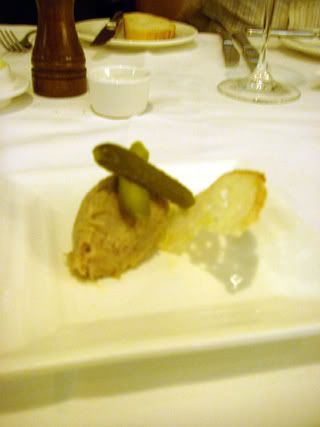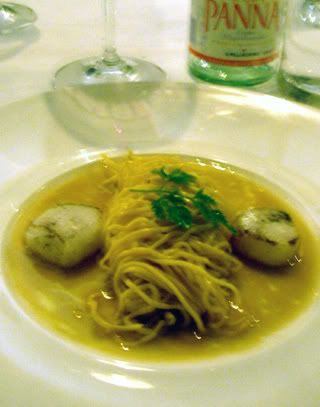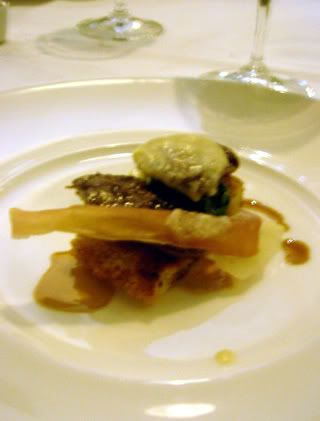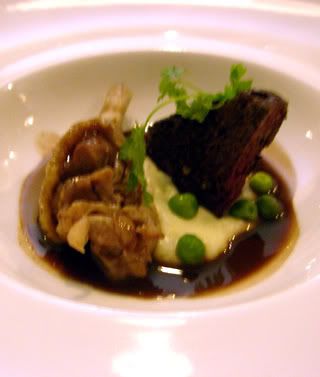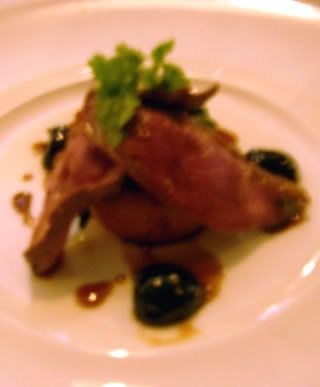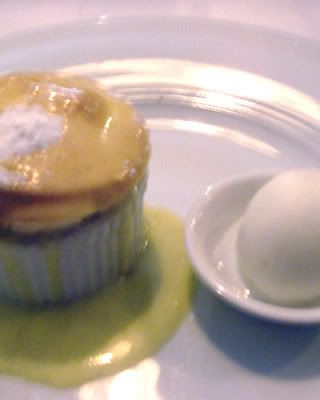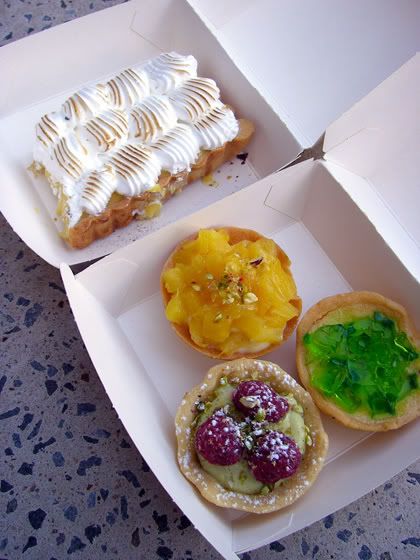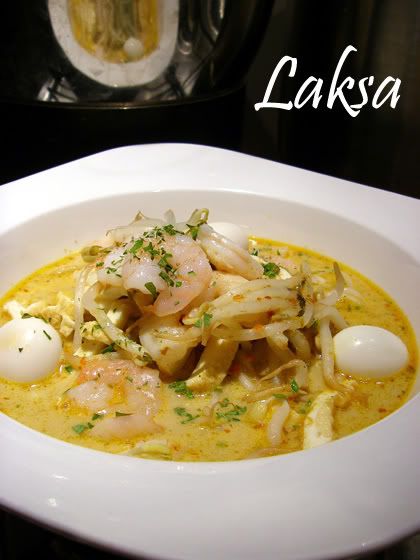
For those new to laksa, it is a traditional Singaporean and Malaysian dish which is served with permutations of a strict few condiments: boiled prawns, fish cake, tofu puffs, bean sprouts, cockles, and hard boiled chicken, duck or quail eggs. Some vendors like to vary the toppings by adding shredded chicken or crayfish to the mix. Either way, real laksa deviates not much further from this set of toppings. So, now that you have been introduced to the real deal, if you ever see roast duck, pork, beef, scallops or bok choy coming into play, please let it send alarm bells ringing.
For an interesting article that talks about real, authentic laksa, please visit this link.
Making laksa from scratch is simpler than it sounds. All you need to do is learn the art of 'tumis'.
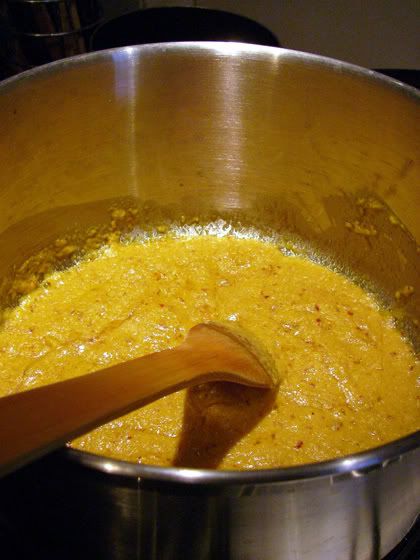
The art of making the perfect laksa, or any other curry for that matter, lies in this one simple process known as 'tumis'. Tumis is a Malay term that refers to the act of frying a spice paste till it is properly caramelised. All too often, I have witnessed fellow colleagues and Aussie TV chefs frying spice pastes for a mere 2 minutes before adding the other ingredients for a particular recipe. Please allow me to insist that cooking a spice paste should take at least 15 minutes, not 2 or 3. Undercooked spice pastes turn out dishes that are bland and horrible.
This techinque of tumis-ing can almost be compared to caramelising onions for French Onion Soup. You need to make sure that the base of the dish is completely and thouroughly caramelised before adding in any other ingredients, or else the dish just wouldn't take off. This, in my opinion, is the trick to cooking many a South East Asian dish.
The picture above shows a laksa spice paste which has just gone into the saucepan. It is mild yellow in colour, homogenous, and emulsified. It needs to be fried with the addition of a little oil in the saucepan till the solids in the paste caramelise. This will take a good 15-20 minutes of continuous stirring over a low heat (just imagine you are cooking risotto, keep stirring and don't walk away till its done).
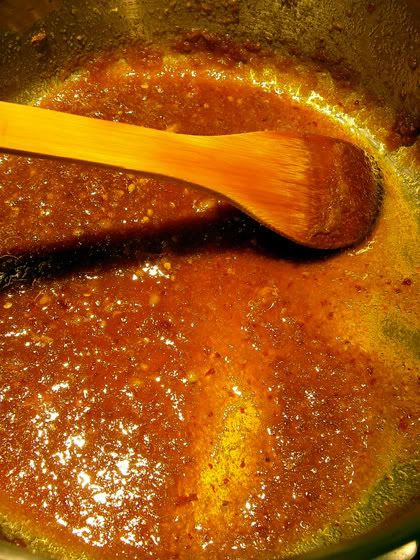
This next picture (above) illustrates what a properly tumis-ed spice paste should look like. It has now transformed from a pale yellow into a deep red/orange. Notice also that the solids have 'split' away from the oil, and are now frying in their own fat. This is the easiest way to tell when the spice paste is done; the oil seperates from the paste, and the solids begin sizzling in the oil. Now now, there's no harm frying it even longer after this stage; you will just be deepening the colour and intensifying the flavour, which is always a good thing! Thus, I generally continue frying my pastes for a further 5 minutes past this point.
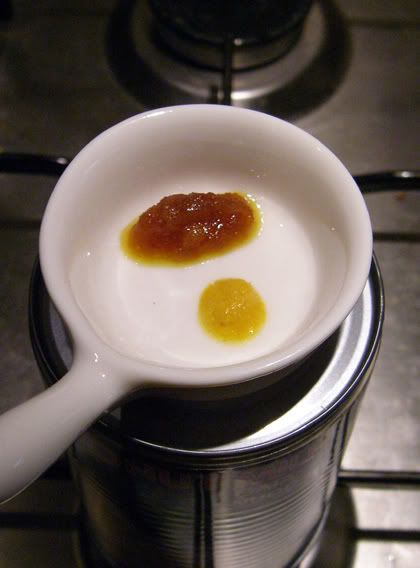
In the above picture, the dot of yellow stuff is a laksa spice paste that is 'raw'. The reddish dot above it is the same paste that has been cooked for 20 minutes over a slow flame, till it has been properly tumis-ed. Now, that should make for a pretty good bowl of laksa!
Laksa paste:
3 lemongrass stalks, lower 2 inches only, sliced
1 cm galangal peeled and sliced
3 candlenuts (or macadamia nuts), chopped
12 dried chillis, reconstitued in warm water
6 shallots, sliced
2 tbsp dried shrimp, reconstitued in warm water
1 tbsp tumeric powder
1 tbsp coriander powder
1 tsp shrimp paste (that smelly stuff from Asian grocers)
water
vegetable oil
Place all ingredients into a blender with a little oil and water to facilitate blending. Blend till smooth. Add more oil and water as necessary to keep the mixture blending.
Tumis as per guidelines above.
2 cups coconut milk
3 cups water
salt
sugar
noodles and condiments to serve
vietnamese mint (laksa leaf), chopped
Once paste is properly tumis-ed, add in water and coconut milk. Return to the boil and simmer for a few minutes. Season to taste with salt and sugar. Ladle over a bowl of noodles and top with condiments such as bean sprouts, hard boiled eggs, cooked shrimp and chicken. Scatter generously with Vietnamese mint, a must-have ingredient in laksa. Do not fret, Vietnamese mint, and all other ingredients listed are available in Coles and Woolworths supermarkets; the exceptions being dried shrimps and shrimp paste, which are easily available at most Asian grocers.
Technorati tags:
